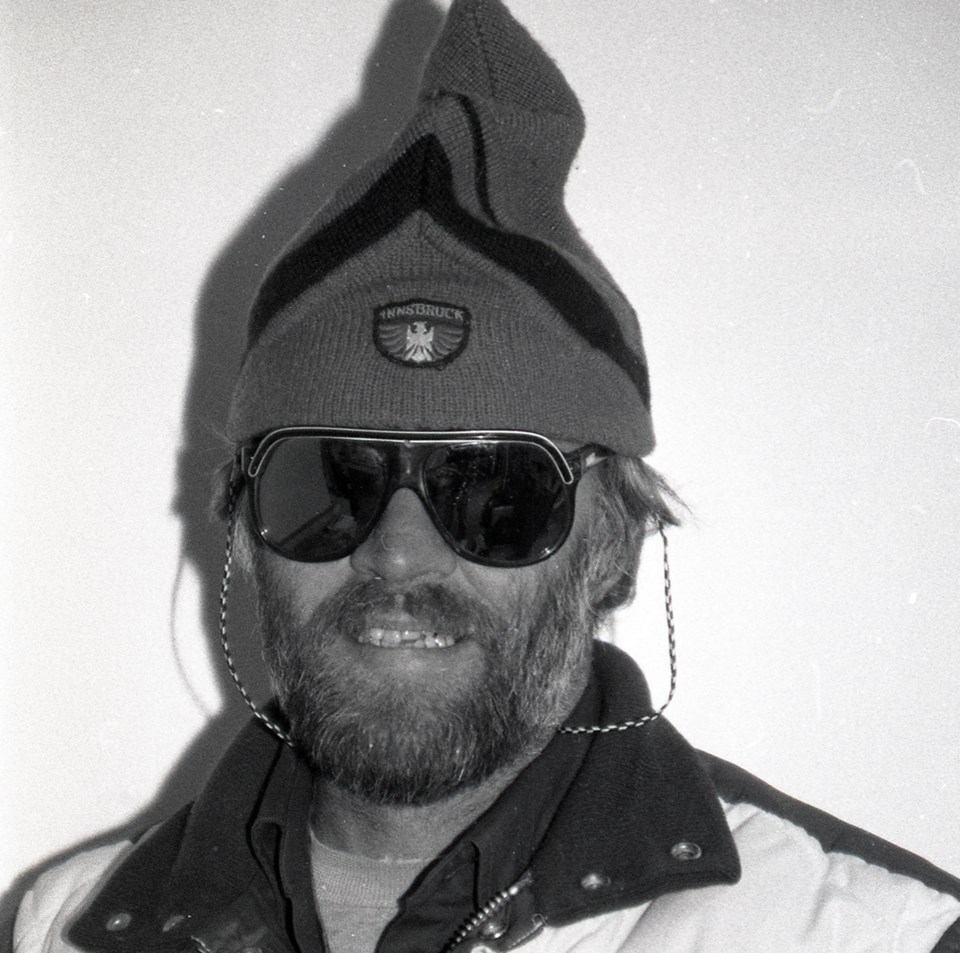Last week we introduced “The Great 2x4 Race,” a ski-race challenge to Dave Murray from Whistler Question sports columnist Doug Sack in 1984. As a very new skier, Sack’s challenge to the former Crazy Canuck was ambitious, even if Murray would be strapped to a pair of two-by-four planks.
On Dec. 13, 1984, Sack used his “Inside Edge” column to report on his first experience on the hill. According to him, his “first bash at skiing last week could roughly be called a success in that I got back down alive off Whistler.” It wasn’t all bad and Sack was determined to continue, despite the steep learning curve, adding that “the scenery ain’t bad either.” Sack continued to report on his skiing progress over the next few months, building up interest in the coming race by exaggerating his failures, triumphs, and the developing worry lines of Murray.
Early in the new year, Sack got some professional help with his endeavour, beginning with a lesson on Skidder on Blackcomb Mountain from Nancy Greene and leading to his announcement on Jan. 17 that he was “the weekday King of Lower Gandy Dancer!” (Sack also, in the same article, addressed Greene to ask “what are the poles for?”). Continuing to practice on Blackcomb (specifically on Skidder for two weeks), Sack progressed to longer runs and longer skis, trying out blue runs and 190s in February and likening the experience to “driving a load of timber downhill with no brakes.”
In March, Sack finally got his own brand new pair of skis instead of the rentals he had been using. While attending the Volvo Ski Show, Sack got to talking to Casey Niewerth, owner of Skyline Sports stores in Vancouver, Whistler Mountain’s original Jolly Green Giant, and, luckily for Sack, then the Canadian sales rep for RD (Research Dynamic) Skis’ new Coyote skis out of Sun Valley, Idaho. Niewerth arranged for a pair of 200 Coyotes for Sack as he set about learning the art of gate training from Blackcomb Ski Club coach Dave Kerwynn.
Gate training began with a run down the GS course with no instruction, letting Kerwynn get an idea of what he was working with. From there, the pair worked to correct mistakes and improve Sack’s time. His first runs and wipeouts down a race course gave Sack a new perspective on ski racing, a sport he had not previously spent much time following. On March 28, Sack wrote: “Ski racing very well could be the ultimate pinnacle of athletic challenge and satisfaction. The thin razor’s edge is so clearly defined: if you go too fast, you wipeout; if you don’t go fast enough, you struck out.”
Over the early months of 1985, plans for the race solidified. A date was chosen (April 22, 1985) and a format decided on. Though Murray nixed the anvil and anchor Sack had originally proposed, he did consent to race on the pair of two-by-four planks that had been dubbed “Crazy Canuck Demos.”
Despite challenging a former national ski team member and current director of skiing to a race, Sack did not expect to become a highly proficient or technical skier in his first season, calling that goal “hopeless.” Instead, he reportedly wanted to claim bragging rights by being able to “ski gates fast enough to make Murray wipeout on his two-by-fours” and become a good enough skier to “cover the national championships on mountain and get back down to the bottom alive,” a reasonable goal for a sports reporter in a town that hosted World Cup races and took ski racing quite seriously.
We’ll be back next week with race results and a conclusion to the unique race on Whistler Mountain.




